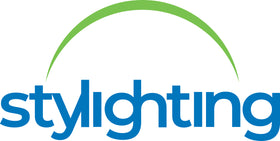Like the Chicago Cubs and Wrigley Field, schools in the past relied on natural daylight as their only illumination source. But from 1945 to 1960, while the economy was booming, attention shifted to improving schools’ infrastructure, including lighting, heating, acoustics, and ventilation.
This was the first step toward developing more cost-effective fluorescent lighting for educational institutions. However, times have changed drastically since the 1960s, and it’s time for administrators to reap the benefits of LED lighting for school facilities.
Superior Quality
In many cases, children come to school already struggling with vision impairment. And additional obstacles that might prevent these pupils from seeing everything in the classroom can be a more significant detriment.
Teachers are likewise susceptible to the detrimental effects of glare and flicker, just like their pupils. People in the classroom may squint, blink, or even avert their gaze if there is too much glare. Both excessive brightness and excessive brightness ratios are likely to blame. Visual performance will suffer, and pain will worsen when one of these is happening.
Everyone can concentrate and get work done in a chilled, bright environment. Fluorescent lights may exacerbate hyperactivity because of the radiation it emits. Improvements in behavior and efficiency may result from limiting this radiation’s exposure by switching to LED lighting.
Contaminant-Free
Switching to modern LED light bulbs may reduce exposure to dangerous chemicals like polychlorinated biphenyls (PCBs). The magnetic T12 fluorescent ballasts include PCBs, which the EPA says are carcinogens with potential impacts on the immunological, neurological, and endocrine systems.
Some of these ballasts may also release trace quantities of PCBs during operation via leakage or breakage. Furthermore, the EPA has also warned that certain T12 fluorescent light bulbs in US schools constructed before 1979 may still contain PCBs.
Old light bulbs also often contain mercury, a toxic metal that may cause various health problems. When the current flows through a fluorescent light bulb, it releases a mixture of mercury and inert gases. Mercury may enter the body via the lungs or the skin, depending on the route of exposure. The potential for mercury contamination from a broken fluorescent bulb makes them unsafe for use in educational institutions.
Stabilizes Moods
Treatment for depression, especially the “winter blues” or Seasonal Affective Disorder (SAD), sometimes involves exposure to bright light. This is especially prevalent in indoor settings like classrooms and workplaces during winter, when individuals don’t get enough daylight.
Negative mood and depression might result from being in a dark place for too long. Because it promotes upbeat emotions, bright lighting helps overcome mental adversity. If it is too dark, students may inadvertently tune things out.
Artificial lighting that mimics natural sunshine improves people’s ability to focus and learn by pushing circadian rhythms forward, allowing them to get up and be aware earlier in the day.
Cutting Costs
Other than the physical and mental benefits of installing LED lights in school facilities, monetary rewards are also worth mentioning. Maintenance staff may have to change thousands of school light bulbs to ensure that every classroom, corridor, restroom, and office has enough illumination.
Maintenance staff may spend considerable time each day changing fluorescent bulbs, particularly in hard-to-reach areas like gymnasiums, auditoriums, and other large rooms with high ceilings. However, when you convert to LED lights, your staff won’t have to spend as much time on maintenance and replacement.
The benefits of LED lighting for school facilities illustrate how upgrading an outdated lighting system with a more technologically advanced A19 bulb can pay dividends for school systems worldwide. Stylighting provides multiple LED lighting options and fixtures to improve a single classroom or the entire campus!

